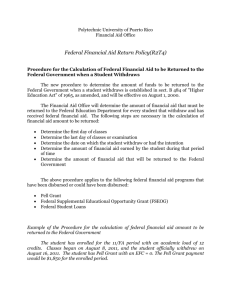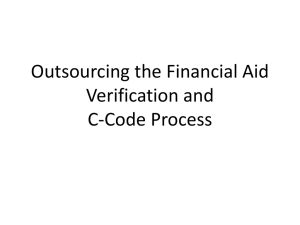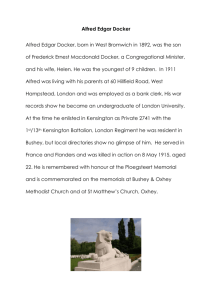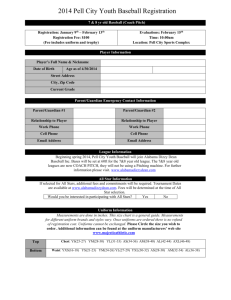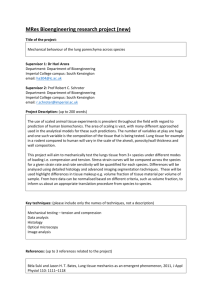Revision Content-964521.pdf - Royal Borough of Kensington and
advertisement
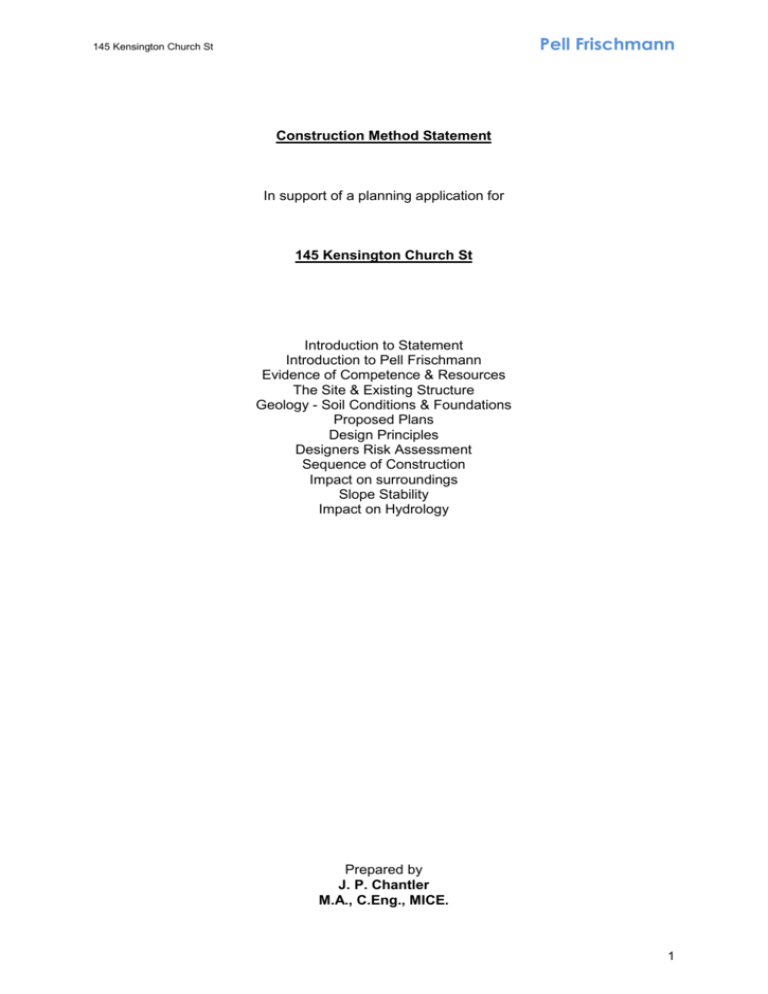
Pell Frischmann 145 Kensington Church St Construction Method Statement In support of a planning application for 145 Kensington Church St Introduction to Statement Introduction to Pell Frischmann Evidence of Competence & Resources The Site & Existing Structure Geology - Soil Conditions & Foundations Proposed Plans Design Principles Designers Risk Assessment Sequence of Construction Impact on surroundings Slope Stability Impact on Hydrology Prepared by J. P. Chantler M.A., C.Eng., MICE. 1 145 Kensington Church St Pell Frischmann Introduction to Statement This Statement has been prepared to identify the relevant issues relating to the design of the basement for the proposed development and forms a Construction Method Statement as required by the Local Authority the Royal Borough of Kensington and Chelsea. The design consultant referred to in this Statement will be the consultant who will be responsible for the design of the sub-structure. Introduction to Pell Frischmann We are one of the UK's leading firms of consulting engineers, with major operations throughout Europe, the Middle East and Asia. Since our establishment over 82 years ago, we have grown into a worldwide organisation with more than 1300 staff and an annual turnover approaching £50 million. In the UK we have 16 regional offices offering multi-disciplinary engineering consultancy services spanning the whole construction industry. We specialise in the structural design of buildings for retail, hotel, leisure, commercial, residential, medical, educational and defence purposes. We also have extensive experience in unlocking development potential through the regeneration of brownfield sites and air rights projects. From the refurbishment of historic buildings to new builds, our expertise is in long spans, deep basements, tall buildings and buildability. Evidence of competence and resources Details of Organisation Name: Address: Contact: Pell Frischmann Head Office 5, Manchester Square London, W1U 3PD, United Kingdom Tel: +44(0) 20 7486 3661 pflondon@pellfrischmann.com John Chantler Nature of Organisation Consulting Engineers Membership of Professional Bodies J P Chantler M.A., C.Eng., M.ICE. Professional Indemnity Details available on request Details of Persons to be employed 2 145 Kensington Church St Pell Frischmann J. P. Chantler on behalf of Pell Frischamann Familiarity with construction processes The Directors have extensive experience in the design and construction of historic and new buildings including underpinning, basement construction, risk appraisal, geotechnical engineering and hydrology. Awareness of relevant Health & Safety and Fire Regulations Within the Company we have documentation relating to these matters which are regularly updated and circulated among the Directors and members of staff. Health & Safety Practices A copy of the Company’s Health & Safety Policy is available upon request. 3 145 Kensington Church St Pell Frischmann Management systems A Project Director is responsible for the design and resourcing of the project. All work is undertaken in accordance with our accredited Integrated Management System. Resources Chartered Engineers, engineers and Technicians will be resourced as required under the supervision of the named Director. Use of technology We use state of the art design, analysis and BIM 3D software, all working to current Eurocodes. Residual risks Residual risks are clearly stated on the tender and construction drawings. 4 145 Kensington Church St Pell Frischmann THE SITE The site is situated between Edge Street to the south, Kensington Place to the north and fronts on to Kensington Church Street to the east. There is a party or boundary wall with the immediate neighbour to the west. This property is a residential three storey building in brick. The existing building on the site has a brick facade and it probably has a concrete frame. PROPOSED DEVELOPMENT The architectural drawings are presented in appendix 1 showing the plan and section of the proposed buildings. A three level basement is planned with ground plus five levels above. GEOLOGY - SOIL CONDITIONS & FOUNDATIONS A site specific investigation has been carried out by RPS and is presented as Appendix 1. It contains a Phase 1 desk study as well as borehole information. Referring to the British Geological Survey Maps it appears that the site is underlain by Made Ground, Lynch HIll Gravel and London Clay. Archive data from the BGS is available to the north, east and south of the site. It is presented in the calculations appended. Whilst the geology maps indicate that the site should be at the edge of an island of gravel over clay, Fig 1, the BGS data confirms the expected profile and indicates that the likely depth to the London Clay is less than 10m. 5 145 Kensington Church St Pell Frischmann 145 Kensington Church St Figure 1 Extract of BGS Geology Plan 1:50,000 Due to the presence of the building and services only one borehole was able to be bored. This revealed:0 1.8m Made Ground 1.8 5.0m Sand & Gravel (Lynch Hill Sand & Gravel) From the adjacent data a pessimistic assumption of London Clay level (i.e. taking a lower horizon) is that the London Clay is present at 10m below Ground Level. SPT tests in the gravel indicate that the upper levels are loose to medium dense (N approx 10) becoming dense to very dense below about 2m. (This accords with the authors experience of a major basement excavation on a property in Kensington Palace Gardens and the adjacent reports which indicate dense to very dense). The London Clay is stiff at its horizon with a cohesion in excess of 100kPa which is normal beneath the relatively thick gravel. The excavation for the basement will cause an unload of approx 200kPa. The pressure exerted by the building will be approx 110kPa. If the base of the raft is drained the reduction in effective stress will be approximately 60kPa which is expected to give rise to a long term heave of 15mm at the centre of the raft or less than 10mm at the perimeter. A no fines layer beneath the raft will therefore be provided with a sump and pump. The quantities will be small due to the relative impermeability of the London Clay. GROUND WATER The geotechnical investigation showed that the water table was deeper than 5m bgl. From adjacent records it will be taken at 7mbgl for the SLS design case. For the ULS cases it will be taken at 1m bgl. 6 145 Kensington Church St Pell Frischmann To guard against seepage into the basement a drained cavity is being provided inside a secant pile concrete wall. IMPACT - HEAVE & SETTLEMENT In order to safeguard the adjacent properties the new basement will be excavated after the installation of an embedded piled wall with stiff props to minimise ground movement. The piled wall provides both temporary support during excavation and permanent support. This is a common engineering solution often used to safely construct deep basements. The piled foundation will be constructed using a piling rig which uses a rotary drill to excavate the piles without vibration. The design predicts wall movements of less than 25mm. The effect of the unload will be to cause minor ground movement remote from the site with the piled wall tending to restrict vertical movement on the party wall. Settlements and movements of the adjacent property are therefore predicted to be of the order of up to 15mm. Active monitoring will be carried out to ensure that the performance of the wall and propping system is known. This will allow the contractor to amend his approach should the trends be indicating that the movements may become unacceptable. The orders of movement are not considered to be of significant impact on buried services and utilities. The LUL tracks are in a cutting some 19m to the west of the development. This is considered sufficiently distant not to be affected. There will be a need to enter into discussions with the LUL outside parties engineers to ensure that they are in agreement with this. INSTABILITY Since the ground surface is relatively level in this area there will be no implications for slope stability. Satisfying the requirements for safe basement construction will cover this. FURTHER INVESTIGATIONS It is recommended that, post demolition, further boreholes are drilled to confirm the stratigraphy laterally and to provide detailed geotechnical parameters for final foundation design. to investigate the geotechnical properties of the soil. It will also be necessary to excavate some trial holes adjacent to the neighbouring property to determine its foundations type and depth. Given the age of the building it is probable that it is supported on traditional strip foundations. Please see Appendix 7 for Design Principles & Criteria and Design Risk Assessments, and Appendix 8 for a typical Sequence of Construction. 7 145 Kensington Church St Pell Frischmann The secant pile wall should be at least 225mm from the existing foundations. (See Appendix 6) 8 Pell Frischmann 145 Kensington Church St APPENDIX 1 ARCHITECTURAL DRAWINGS 9 145 Kensington Church St Pell Frischmann 10 145 Kensington Church St Pell Frischmann 11 Pell Frischmann 145 Kensington Church St APPENDIX 2 RPS SITE INVESTIGATION REPORT 12 145 Kensington Church St Pell Frischmann APPENDIX 3 LUL INFORMATION 13 145 Kensington Church St Pell Frischmann 14 Pell Frischmann 145 Kensington Church St APPENDIX 3 BASEMENT DESIGN CALCULATION 15 Pell Frischmann 145 Kensington Church St APPENDIX 5 MAP SHOWING LOST RIVERS OF LONDON 16 Pell Frischmann 145 Kensington Church St The Site 17 Pell Frischmann 145 Kensington Church St APPENDIX 6 SKETCH A12741-VAA-SK01 18 145 Kensington Church St Pell Frischmann 19 Pell Frischmann 145 Kensington Church St APPENDIX 7 DESIGN PRINCIPLES AND CRITERIA DESIGNERS RISK ASSESSMENT 20 145 Kensington Church St Pell Frischmann Design principles Basement box structure Inside the piled wall will be a drained cavity to provide a class 2/3 habitable environment. If contiguous bored piles are preferred, it will be necessary to apply a concrete lining wall to ensure sufficiently water resistant construction. The secant pile wall will support the full surcharge from the foundations of the adjoining buildings to ensure only negligible damage to the superstructure of the building. The wall and floor slab system will prop the secant pile wall. Concrete Concrete should specified by the design consultant in accordance with the engineering design requirements. Concrete grades should be clearly specified on the construction drawings. Foundation The lowest concrete slab will form a raft foundation with the structural capacity to support the floor, wall and superstructure loads. Superstructure The superstructure will be designed and constructed using a cast in-situ reinforced concrete floor supported on concrete columns and\or blockwork walls. Design criteria All to current Eurocodes and UK National Annex. 21 Pell Frischmann 145 Kensington Church St Designers risk assessment Hazards & risks which cannot be designed out Potential Hazards Falls from Height Rating Action Required Works being carried out - provide hand rails and access scaffolding to all openings. Residual Riskt Medium High Falling Debris High Works carried out beside public pavements. Provide hoardings, toe boards, netting and protection fans. Lowh Materials Storage Medium Existing roofs and floors are not to be used for storage of materials without reference to the Engineer or for supporting access scaffolding. Low Lifting of Steelwork High Steel sections to be lifted using mechanical means where unable to be manually lifted. Medium Erection of Steelwork High Contractor responsible for providing method statement for erection procedure, including any temporary bracing. Medium Lifting of Timber High Timber rafters and joists to be lifted using mechanical means where unable to be manually lifted. Medium Fixing of Timber Medium Timbers to be fixed in accordance with good building practice. Low Use of Cutting Equipment – Flame or Disc. High Fire risk - use suitable protective methods – remove inflammable materials. Medium 22 Pell Frischmann 145 Kensington Church St Painting Low Touch up steelwork with primer – take precautions against vapour inhalation, eye and skin contact and fire. Wear protective clothing. Take precaution against collapse of excavation and hazards of persons falling in. Low Excavation High Precast Concrete units High Lift into position using mechanical assistance. Storage at ground level in a safe manner. Medium Insitu Concrete Construction Medium Low Formwork/Falsework Medium Take precautions to prevent skin/eye contact. Protect public and site staff from falling objects and spillage. Ensure adequate care when fixing reinforcement. Design temporary works in a manner that makes allowances for all loadings, including accidental loads. Ensure adequate vertical and diagonal bracing. Supports not to be removed until period specified. Medium Medium 23 Pell Frischmann 145 Kensington Church St APPENDIX 8 SEQUENCE OF BASEMENT CONSTRUCTION 1. 2. 3. 4. 5. 6. 7. 8. 9. 10. 11. 12. Construct temporary guide wall Construct secant bored piles to create an embedded perimeter wall. Trim piles, remove guide wall and construct pile capping beam. Excavate to first prop level and install horizontal shoring. Excavate to second temporary prop level and install second prop Excavate to third temporary prop level and install third prop Complete excavation and instal no fines layer and in/under raft drainage. Place rebar and place concrete for raft by pump. Commence columns and walls upwards, each slab forming a permenant prop to the wall, removing the temporary props as they become redundant. Cast ground floor slab. Provide cavity floor and block walls to basement box. Complete superstructure. 24
